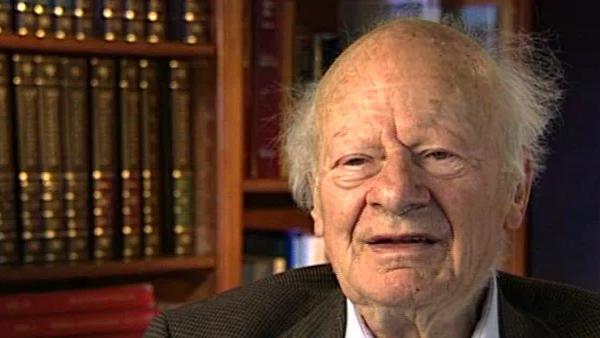NEXT STORY

Physics in the future
RELATED STORIES

NEXT STORY

Physics in the future
RELATED STORIES


|
Views | Duration | |
|---|---|---|---|
| 151. The SAGE experiment | 271 | 02:57 | |
| 152. Pleasing results from the experiments | 184 | 01:39 | |
| 153. Looking forward to the Sudbury Neutrino Observatory experiment | 231 | 02:56 | |
| 154. The Sudbury Neutrino Observatory experiment | 195 | 01:22 | |
| 155. Implications about the neutrino masses | 255 | 01:27 | |
| 156. Thoughts on the development of 20th century physics | 594 | 02:38 | |
| 157. Subatomic phenomena; quarks and gluons | 490 | 02:40 | |
| 158. Physics in the future | 943 | 03:29 |

We want to understand the subatomic phenomena, the nuclear force and the subatomic particles, the many different mesons. Gell-Mann has been very productive in bring order into this chaos, and we have by the collaboration of many people, now what is known as the Standard Model of Nuclear Interactions which comprises all the mesons, comprises the nucleon and its many excited states. And also the way nuclear matter behaves at enormously high energy, in which again my friend Gerry Brown is deeply involved, where you get the transition from normal matter, nucleons and mesons to something... the Quark Gluon Plasma. And as far as we can tell at this point, again the standard model seems to be correct, though experimenters have tried to disprove it, and so far they have not succeeded. But one can hope that maybe some new insight may be obtained by the higher energies which... which are available now at CERN, their Proton Accelerator which will get us into the trillion electron volt region and maybe new phenomena will then occur which will better elucidate the interaction of all the particles that we know, and elucidate that standard model.
The late German-American physicist Hans Bethe once described himself as the H-bomb's midwife. He left Nazi Germany in 1933, after which he helped develop the first atomic bomb, won the Nobel Prize in Physics in 1967 for his contribution to the theory of nuclear reactions, advocated tighter controls over nuclear weapons and campaigned vigorously for the peaceful use of nuclear energy.
Title: Subatomic phenomena; quarks and gluons
Listeners: Sam Schweber
Silvan Sam Schweber is the Koret Professor of the History of Ideas and Professor of Physics at Brandeis University, and a Faculty Associate in the Department of the History of Science at Harvard University. He is the author of a history of the development of quantum electro mechanics, "QED and the men who made it", and has recently completed a biography of Hans Bethe and the history of nuclear weapons development, "In the Shadow of the Bomb: Oppenheimer, Bethe, and the Moral Responsibility of the Scientist" (Princeton University Press, 2000).
Tags: CERN, Murray Gell-Mann, Gerald Brown
Duration: 2 minutes, 41 seconds
Date story recorded: December 1996
Date story went live: 24 January 2008